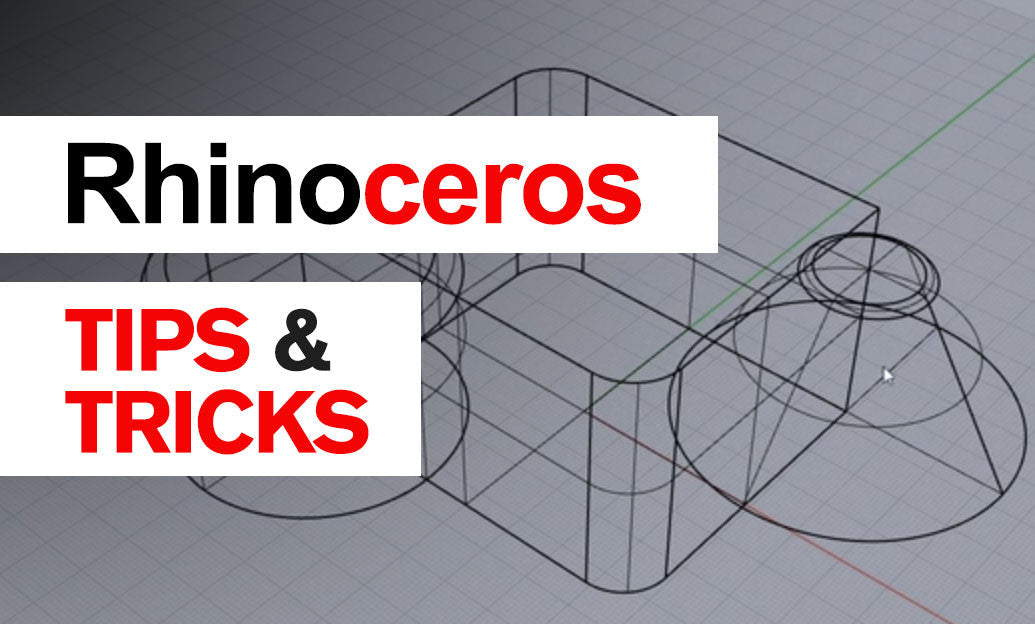Your Cart is Empty
Customer Testimonials
-
"Great customer service. The folks at Novedge were super helpful in navigating a somewhat complicated order including software upgrades and serial numbers in various stages of inactivity. They were friendly and helpful throughout the process.."
Ruben Ruckmark
"Quick & very helpful. We have been using Novedge for years and are very happy with their quick service when we need to make a purchase and excellent support resolving any issues."
Will Woodson
"Scott is the best. He reminds me about subscriptions dates, guides me in the correct direction for updates. He always responds promptly to me. He is literally the reason I continue to work with Novedge and will do so in the future."
Edward Mchugh
"Calvin Lok is “the man”. After my purchase of Sketchup 2021, he called me and provided step-by-step instructions to ease me through difficulties I was having with the setup of my new software."
Mike Borzage
Rhino 3D Tip: "Enhancing Rhino 3D and Revit Integration for Efficient Architectural Workflows"
September 07, 2024 2 min read

Conducting efficient workflows between Rhino 3D and Revit can significantly enhance your architectural and design projects. Here are some tips to streamline this process:
-
Preparation in Rhino:
-
Clean Geometry: Ensure your Rhino model is clean and free from unnecessary layers or objects. Use the
Purgecommand to remove unused items and theSelBadObjectscommand to identify problematic geometry. - Layer Management: Organize your model using layers. This will make it easier to manage and control the visibility of various elements when importing into Revit.
-
Export Settings: Use the
Exportcommand and choose the appropriate file format for Revit, typically .DWG or .SAT files.
-
Clean Geometry: Ensure your Rhino model is clean and free from unnecessary layers or objects. Use the
-
Importing into Revit:
- Coordinate Systems: Ensure that the coordinate systems in Rhino and Revit are aligned. This can prevent issues related to scale and placement of imported models.
- File Format: For best results, use the .DWG format for 2D data and .SAT format for 3D data. This helps maintain the integrity of your model’s geometry.
-
Link vs. Import: Consider using the
Link CADfeature in Revit, which allows for dynamic updates. This way, any changes made in Rhino can be reflected in Revit without re-importing.
-
Optimizing Workflow:
- Regular Updates: Keep your Rhino and Revit files updated regularly. Frequent synchronization can prevent larger issues down the line.
- Use Plugins: Leverage plugins like Rhino.Inside.Revit, which allows Rhino to run inside Revit. This can streamline workflows and enhance interoperability.
- Parametric Design: If using Grasshopper, take advantage of Rhino.Inside’s ability to bring parametric designs directly into Revit, enhancing flexibility and design exploration.
-
Common Pitfalls and Solutions:
- Geometry Issues: If you encounter geometry issues, revisit your Rhino model to ensure it complies with Revit’s requirements. Fix any non-manifold edges and ensure all surfaces are correctly oriented.
- Performance: Large models can slow down performance. Optimize your models by reducing unnecessary detail and using LOD (Level of Detail) strategies.
- Material Mapping: Revit may not recognize Rhino materials directly. Assign materials in Revit after import for better control and consistency.
For more in-depth guidance and advanced tips on Rhino and Revit workflows, visit Novedge at https://novedge.com/. Their extensive resources and expert advice can help you master the integration of these powerful tools.
Stay connected with Novedge for the latest updates and offers at Novedge Facebook and Novedge Twitter.
You can find all the Rhino products on the NOVEDGE web site at this page.
Also in Design News

Design Software History: The Evolution of Automated Code Generation: From UML Models to AI-Enhanced Software Development
November 26, 2024 5 min read
Read More
Cinema 4D Tip: Enhance 3D Animations with Cinema 4D's Sound Effector Tool
November 26, 2024 2 min read
Read MoreSubscribe
Sign up to get the latest on sales, new releases and more …



